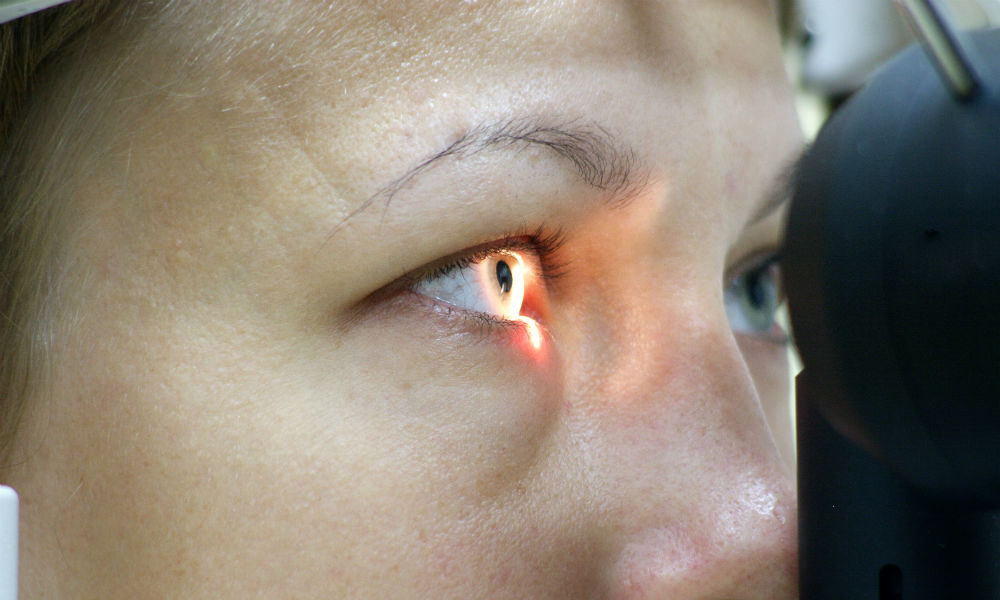
Many people around the world - about 300 million - suffer from decreased vision or blindness. Improved medical technology has been making it easier for nearsighted and farsighted patients to see. They have also been making great progress in improving the odds of saving the vision of macular degeneration and glaucoma patients. New advanced diagnostic equipment for doctors, such as Truvision Acuity have also played a big part. Researchers are now on the edge of finding cures for other types of blindness, which people believed to be incurable.
The bionic eye is helping those who previously could see only darkness, to now see glimpses of light.
The following lists some of the current advancements made in the world of ocular medicine:
1. Corneal Inlay to Replace Reading Glasses
Patients' ability to read and view objects diminishes as they age because of presbyopia. Some ease into the routine of wearing reading glasses, bifocal glasses, or contacts, others may find it tedious to cope with vision loss by using corrective lenses.
However, another option is near. A small, ring-like device known as the corneal inlay hopes to correct vision whether patients are farsighted, nearsighted, or both. The physician implants the ring under the eye's outer surface. It allows the wearers to see both near and far.
2. Diamonds might Prevent Vision Loss for Glaucoma Patients
Eye drops are administered to patients diagnosed with glaucoma in order to prevent pressure buildup in their eyes that results in blindness. It can be difficult to properly use, or remember to use the drops at regular intervals which may cause relapse. Researchers at the University of California, Los Angeles (UCLA) have been seeking to solve both problems by creating contact lens from tiny nanodiamonds.
These lenses are coated with time-release medication so that the right dose of medication is discharged on the right spot at the right time. The project will soon proceed to animal studies.
3. HIV Meds for Macular Degeneration
Nucleoside reverse transcriptase inhibitors (NRTIs) are the drugs most often used to treat HIV and AIDS. Scientists believe it may one day be relevant in treating macular degeneration. The NRTIs have been observed in mice to possess intrinsic anti-inflammatory activity and researchers believe that patients suffering from age-related macular degeneration with geographic atrophy will find it useful. However, the research is still in the animal testing phase, and is still far from human trials. But the medicine is already on the market and is cheap and safe.
4. Printing New Eyes
It costs about $5000 to replace a damaged eye with a traditional glass or acrylic eye. The new 'eyes' still may look odd. However New 3D printing technology seeks to change all that, and could reduce the cost of a prosthetic eye to as low as $150. The new technology claims to allow for color matching with the original eye. Britain's Manchester Metropolitan University and London's Grip Design have merged to carry out a project to make eyes ready for market within a year.
5. Gene Therapy for Vision Loss
At the University of California, Berkeley, researchers have placed a gene into the retinas of blind mice to enable the animals detect whether lights were flashing. A chemical switch was added to allow brain cells to respond to light. The technique worked to restore sight in dogs but has not been confirmed ready to test on humans.
6. A New Way of Diagnosing Glaucoma
The Scientists at City University London mapped eye movements of people while they watched TV. They noticed that healthy eyes chart a different path from eyes that are not healthy. The study is still young, but researchers hope that it will result with an earlier and easier diagnosis of and treatment for glaucoma and other diseases of the eye. Researchers predict that the technology will one day be used by patients who do not have access to physicians especially those residing in rural areas and places with low physician numbers.
7. Implant May Reduce Hospital Visits
Glaucoma patients must see their ophthalmologists for pressure checks on a regular basis. The office visits are vital to make sure that the optic nerve is not under excess pressure which could lead to blindness. Researchers at the University of Washington are working on the use of an implantable electronic sensor placed in the eye to track pressure changes. The wireless gadget will be made to send this important data to a handheld device, smartphone, or even straight to the doctor which would eliminate unnecessary visits.
8. A Sharp (News - Alert) Eye Drop Replacement
The idea of replacing the daily eye drops with a needle may seem weird. But researchers at Georgia Tech have created needle points that are so fine they can be used to inject drugs painlessly and precisely at the needed spot inside the eye.
The needle treatment is being improved to combat vision-stealing conditions, such as glaucoma and the growth of blood vessels in the cornea. The needles have only been tested on animals.
